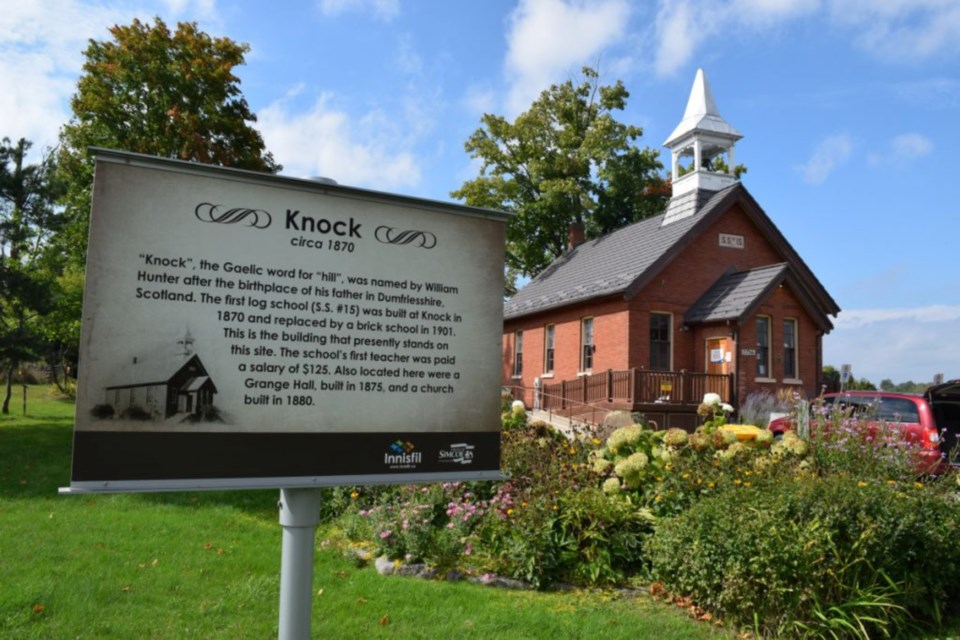Long before the Internet and cellphones, a group of people started seeking and gathering all kinds of historical data referencing various aspects of life in Innisfil over the years.
Those individuals were the original members of the Innisfil Historical Society (IHS), which is celebrating its 50th anniversary this fall.
“It’s so rewarding that our members, as well as residents, are still very interested in the history and culture of this place,” said IHS President Mark Hall.
From its earliest beginnings in 1972, the IHS has continued to thrive, providing both access to historical information and various programs aimed at promoting Innisfil history and other worthy topics.
Back in the earlier period, the founding members of the IHS would spend hours working to sort, file, and record various items of historical value. These included photos, maps, documents, newspapers, books, magazines, and more.
While the Document Centre continues to expand, every photo, document, and article donated in previous years has now been scanned onto the IHS website, developed in partnership with the Innisfil Public Library. Much of these materials are now available online 24/7, with hard copies and information sheets retained at Knock School Heritage Site, the former Knock School House and home to the IHS.
One of the most prestigious books in the collections is Glimpses of Cookstown by Joan McLean—a thorough examination of all properties of the Village of Cookstown from its beginning to 1991.
Requests for information come from people across North America and worldwide and the IHS has a team working on family histories.
“In addition to our online archives, we have many members who are lifetime Innisfil residents and who have an encyclopedic knowledge of local families, places, and events.”
IHS has a whole shelf of self-published books, including the series Historical Reviews. Among those, two of the most searched are Farms of Innisfil, which traces the ownership and story of each family farm in the area, and Innisfil Reviews, which lists churches, schools, cemeteries, villages, and families from earliest days onward. The Society is currently engaged in a Simcoe County project that involves searching through Innisfil to determine the locations and obtain quality photos of all old barns.
"I would say that much of our work centres around brining the past to life, and that means making people from the past appear as people, not just dusty figures from history," said Innisfil community liaison and former IHS president Donna Wice.
One of Wice’s favourite items is the century-old photo entitled “Elizabeth Calder in a group photo,” featuring a group of young people dressed for some kind of summertime gathering. Many of them hail from farms along the 12th Line, now Mapleview Drive East in Barrie, between Yonge Street and Huronia Road.
“What I like best is that you can see they’re all having fun. It’s a rather casual photo for the time; almost like today’s Instagram.”
The IHS is always looking for new donations of photos and documents for the website. The offered items would be scanned by specialist library staff and returned to the donors, rather than retained.
“We generally refer potential donors to the Simcoe County Museum and Archives, which are in a better position to preserve important materials.”
With photo collections of early times and settlers reasonably complete, the IHS is turning to a more recent period of history, targeting shots taken from the 60s to 90s. These may include photos of businesses, key community people, and the roles played in local events.
The IHS has sought to promote the idea that anyone can experience history just by walking or driving around Innisfil.
“Take Innisfil Beach Park. Today, it’s a great spot to enjoy a hot summer day. But this spot has also long been a crossroad that connected travel routes from the waters of Lake Simcoe to the land that we call Innisfil. In earlier days, Indigenous people would travel here.”
Rather than focus solely on the idea of an archive, the IHS has been working to bring history to the people through regular meetings on a historical topic, often with a guest speaker. These meetings are free of charge, and held from September to June at Knock.
It’s worth mentioning that the interior of the Knock School Heritage Site, a brick building constructed in 1907, remains much the same as when it was a school.
“The Knock School Heritage Site represents our philosophy regarding retaining historically significant buildings. They need to remain in the landscape, but also useful and relevant to residents today.”
As part of the 50th-anniversary celebration, an open house at the Knock School Heritage Site is scheduled for Saturday, Sept. 17.
“Our open house is a chance for young and old to check out historical treasures and see what a genuine one room school house looks like.”
For more information on the Innisfil Historical Society, click here www.ourstoriesinnisfil.ca.
